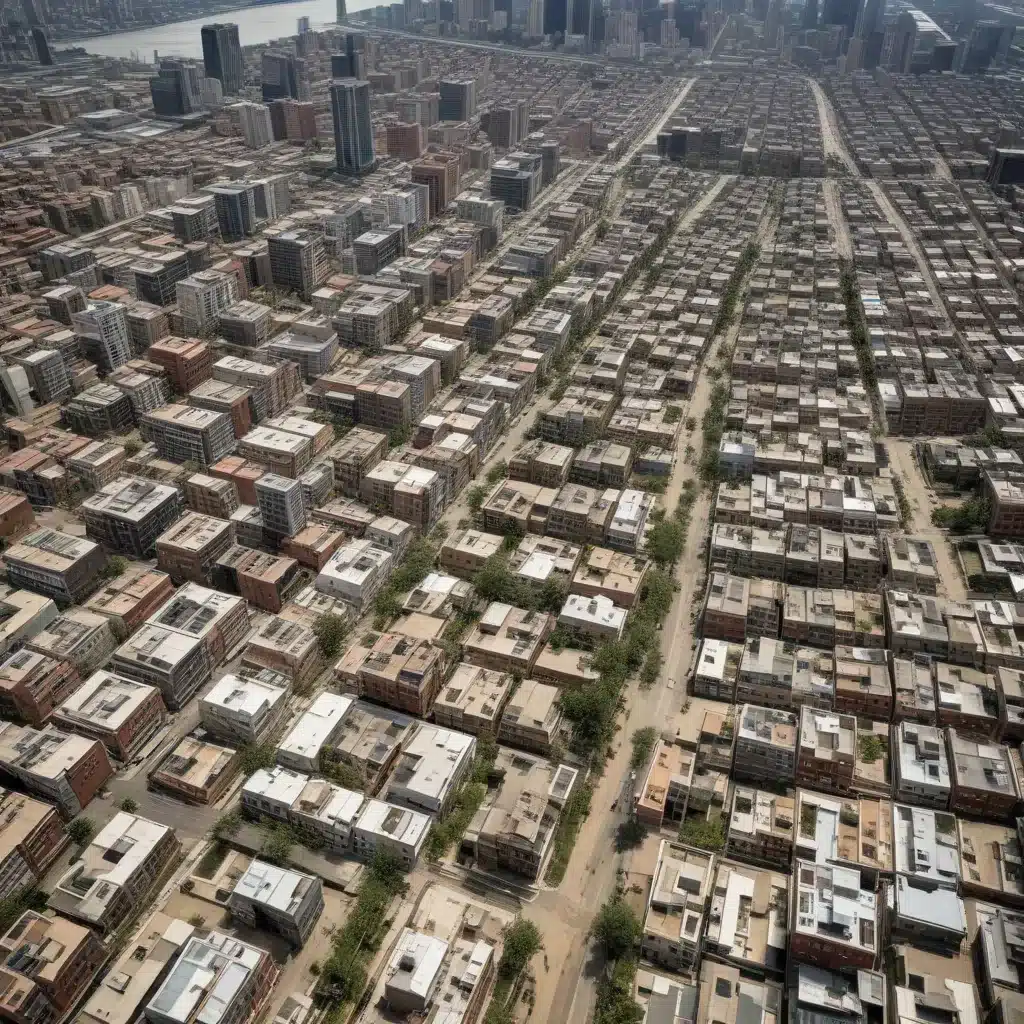
The vitality of a city’s infrastructure is paramount when confronting the aftermath of catastrophe. As communities rebuild in the face of calamity, resilient urban planning strategies are essential for safeguarding critical systems, fortifying vulnerable populations, and restoring a sense of security. At TriCounty Tree Care, our arborists and urban forestry experts collaborate with civil engineers, emergency managers, and landscape architects to cultivate disaster-resilient landscapes that can withstand the unpredictable forces of nature and man-made crises.
Urban Planning Strategies
Effective disaster mitigation begins with comprehensive land use planning that anticipates potential threats and integrates resilience as a core principle. Sustainable land use policies encourage development patterns that minimize exposure to hazards, preserve natural buffers, and facilitate efficient emergency response. For example, restricting construction in floodplains or along coastal areas susceptible to storm surges can reduce the vulnerability of critical infrastructure and residential communities.
Ensuring the resilience of infrastructure is likewise crucial. Strengthening bridges, utility networks, and transportation systems to withstand the impacts of disasters – be they earthquakes, hurricanes, or terrorist attacks – safeguards the essential functions that allow cities to bounce back. Integrating redundancies, hardening facilities, and employing redundant communication networks all contribute to an urban landscape that can withstand and rapidly recover from disruption.
Equally important are well-designed transportation networks that enable efficient evacuation, emergency response, and post-disaster recovery. Strategically placed throughways, distributed fuel and power supplies, and coordinated transit systems are force multipliers that enhance a city’s capacity to weather crises.
Disaster Mitigation Measures
Beyond land use and infrastructure planning, direct mitigation measures play a vital role in securing the urban environment. Structural reinforcement of buildings, bridges, and other critical facilities increases their resistance to the destructive forces of natural disasters and intentional attacks. Techniques such as seismic retrofitting, blast-resistant design, and flood-proofing harden the built landscape against catastrophic failure.
Comprehensive emergency preparedness plans, regularly tested and updated, equip municipalities to respond rapidly and effectively to unfolding events. From emergency communications to coordinated evacuation procedures, these plans leverage community resources to save lives and expedite recovery. Equally vital are public education campaigns that empower residents to prepare their homes and businesses, further bolstering a city’s disaster resilience.
Community engagement is a cornerstone of effective disaster mitigation. Fostering connections between local government, first responders, and the public cultivates a shared sense of responsibility for safeguarding the urban environment. Volunteer networks, neighborhood watch programs, and public-private partnerships leverage the collective capacity of a city’s inhabitants to identify vulnerabilities, implement protective measures, and support long-term recovery efforts.
Securing Critical Infrastructure
A city’s vital functions – from clean water to reliable power to uninterrupted communications – rely on the resilience of its critical infrastructure. Hardening these essential systems against disruption is a key priority for urban planners and emergency managers.
Ensuring the continuity of public utilities is paramount. Redundant water systems, fortified power grids, and redundant communication networks minimize the risk of cascading failures that could cripple a city’s ability to respond and recover. Diversifying supply chains, implementing backup generation, and shielding infrastructure from physical and cyber threats all contribute to a robust, resilient utility framework.
Likewise, the resilience of transportation systems is crucial for facilitating emergency response, evacuation, and the flow of supplies and personnel during and after a disaster. Strengthening roads, bridges, and mass transit infrastructure, securing airports and ports, and coordinating multimodal logistics enable the seamless movement of people and resources – a vital component of urban disaster preparedness.
Community Resilience
The resilience of a city’s physical infrastructure is complemented by the social resilience of its inhabitants. Addressing the unique vulnerabilities of marginalized populations, crafting inclusive disaster response plans, and fostering civic engagement are essential for cultivating holistic community resilience.
Understanding and mitigating social vulnerability is a key step in comprehensive disaster planning. Identifying populations at elevated risk – the elderly, the disabled, low-income residents, and linguistic minorities, for example – allows for targeted outreach, specialized assistance, and tailored emergency procedures. Integrating these considerations into disaster response plans enhances equitable outcomes and bolsters the resilience of the entire community.
Equally vital is civic engagement, which harnesses the collective capacity of a city’s residents to safeguard their shared environment. Public-private partnerships, volunteer networks, and community-driven initiatives empower citizens to contribute to disaster mitigation, response, and recovery efforts. This sense of shared responsibility and investment in the urban landscape is a powerful force multiplier for enhancing overall resilience.
Technological Solutions
Emerging technological solutions play a pivotal role in strengthening a city’s disaster resilience. Advanced sensor networks and early warning systems enable rapid detection of unfolding events, allowing for proactive mobilization of emergency resources. Real-time situational awareness empowers decision-makers to coordinate response efforts effectively and efficiently.
Furthermore, data-driven approaches to disaster planning and management yield significant dividends. Geospatial analytics and predictive modeling help identify vulnerabilities, allocate resources, and optimize mitigation strategies. By transforming raw data into actionable intelligence, cities can make more informed decisions that bolster their resilience to a wide range of threats.
At TriCounty Tree Care, we leverage our expertise in urban forestry, arboriculture, and landscape design to collaborate with municipal agencies, emergency responders, and community stakeholders in crafting holistic disaster resilience strategies. From reinforcing critical infrastructure to empowering residents, our multidisciplinary approach ensures that the urban landscapes we steward can withstand the challenges of the 21st century. By securing the resilience of our cities, we safeguard the wellbeing of our communities and the natural environment that sustains them.


